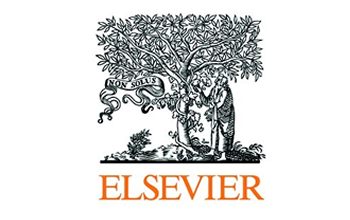Modulation by 17β-estradiol of anandamide vasorelaxation in normotensive and hypertensive rats: A role for TRPV1 but not fatty acid amide hydrolase
- Division of Biomedical Sciences, St. George’s University of London, Cranmer Terrace, London SW17 0RE, UK
Abstract
Recent studies suggest that endocannabinoid signaling is modulated by 17β-estradiol (17Eβ) however it is unclear if this applies to the cardiovascular actions of anandamide, a major endocannabinoid. This study examined the in vitro effects of 17Eβ on vasorelaxation to anandamide in myograph-mounted small mesenteric arteries obtained from Wistar rats and Spontaneously Hypertensive Rats (SHRs) of both sexes. Treatment with 1 μM 17Eβ but not its enantiomer 17Eα significantly enhanced relaxation to anandamide in male Wistar rats. This effect was independent of a functional endothelium but was blocked by the Transient Receptor Potential Vanilloid type 1 (TRPV1) receptor antagonist SB366791 (2 μM) or prolonged treatment with the TRPV1 agonist capsaicin (10 μM). A TRPV1-dependent potentiation by 17Eβ was also observed in male SHRs, but not in female Wistar rats or female SHRs. Whilst inhibition of anandamide hydrolysis by 1 μM URB597 (an inhibitor of fatty acid amide hydrolase; FAAH) similarly augmented anandamide relaxation in male, but not female, Wistar rats and SHRs, URB597 did not affect the 17Eβ-induced potentiation. Female SHRs displayed a larger maximal relaxation to anandamide; however sex difference was not found in Wistar rats. We conclude that pharmacological levels of 17Eβ potentiate mesenteric relaxation to anandamide through mechanisms dependent on TRPV1 receptors but not FAAH-mediated hydrolysis in male Wistar rats and male SHRs. Sexual dimorphism was observed in the modulatory effects of 17Eβ and URB597, which does not necessarily lead to a greater anandamide response in female rats.
Keywords
- Endocannabinoid;
- Hypertension;
- Mesenteric artery;
- Sex difference;
- Gonadal hormone
Figures and tables from this article:
- Fig. 1. Relaxation to anandamide in male Wistar rats. Effects of 17Eβ (at 0.1 or 1 μM for 2 h) on anandamide responses in (A) endothelium-intact and (B) endothelium-denuded vessels. (C) Effects of capsaicin (10 μM), or capsaicin (10 μM) followed by 17Eβ (1 μM for 2 h), on anandamide responses. (D) Effects of SB366791 (2 μM) alone or with 17Eβ (1 μM for 2 h) on anandamide responses, n=4–7. Values are shown as means and vertical bars represent S.E.M.
- Fig. 2. Relaxation to anandamide in male SHRs. (A) Effects of endothelial removal and (B) 1 μM 17Eβ (for 2 h) on anandamide responses. (C) Effects of capsaicin (10 μM), or capsaicin (10 μM) followed by 17Eβ (1 μM for 2 h), on anandamide responses. (D) Effects of SB366791 (2 μM) alone or with 17Eβ (1 μM for 2 h) on anandamide responses,n=4–7. Values are shown as means and vertical bars represent S.E.M.
- Table 1. Relaxation to anandamide and abnormal-cannabidiol in male Wistar rats.

- Ec, endothelium; 17Eα, 17α-estradiol; 17Eβ, 17β-estradiol.
- View Within Article
- Table 2. Relaxation to anandamide in male SHRs.

- Ec, endothelium; 17Eβ, 17β-estradiol, ND: not determined..
- View Within Article
- Table 3. Relaxation to anandamide in female Wistar rats and SHRs.

- Ec: endothelium; 17Eβ: 17β-estradiol.
- View Within Article
Copyright © 2013 Elsevier B.V. All rights reserved.










